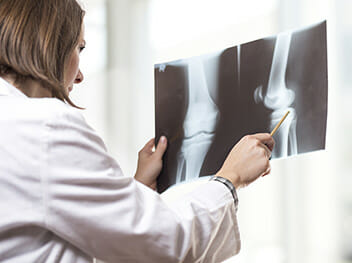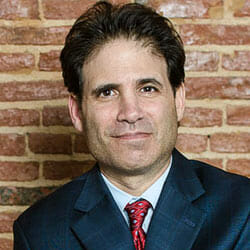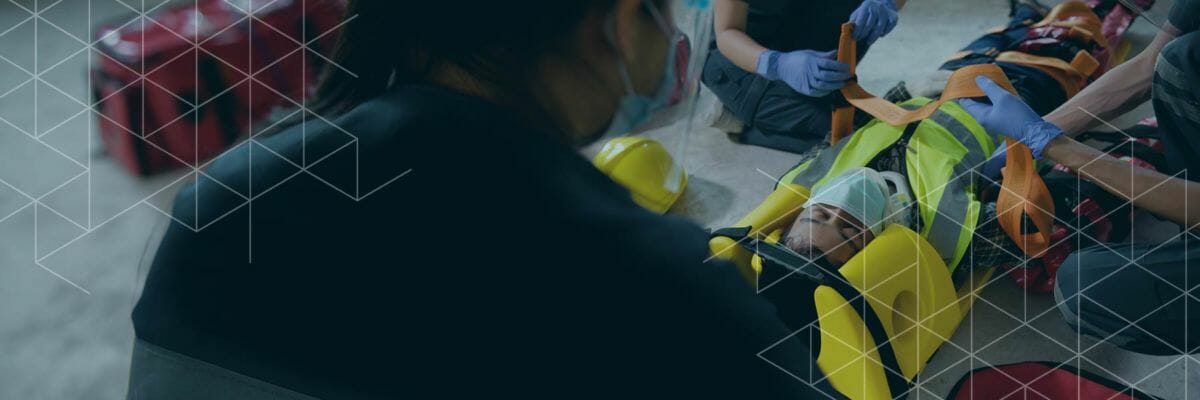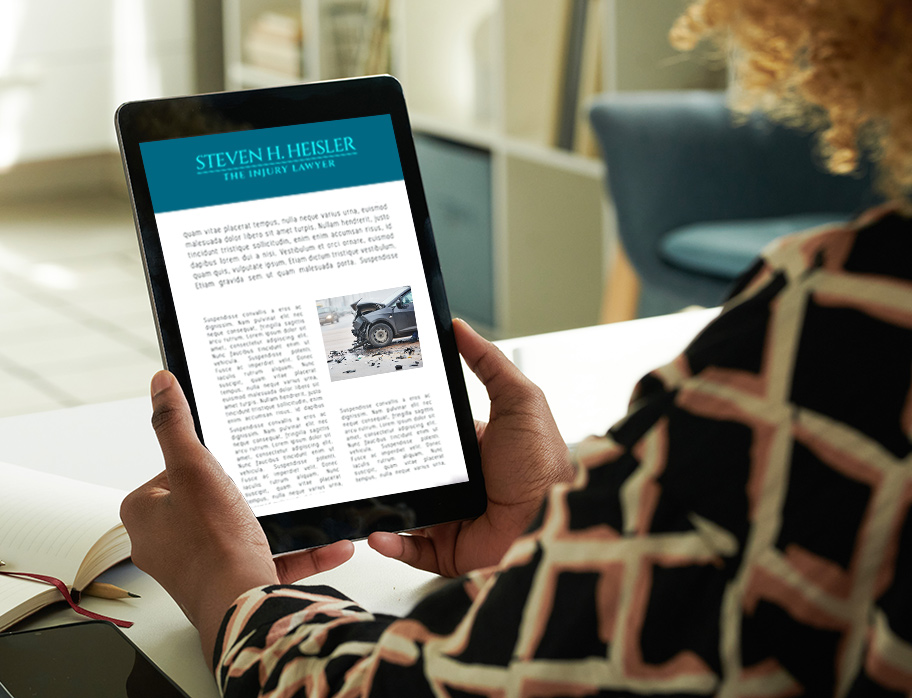 “Hard as bone” is not an uncommon expression. But our bones can be surprisingly fragile, especially in a serious car crash. Statistics indicate that the average driver will be in an accident once every 18 years. If you start driving at 16 and keep at it until you’re 76, you’ll be in at least three to four accidents, statistically speaking, during your lifetime.
“Hard as bone” is not an uncommon expression. But our bones can be surprisingly fragile, especially in a serious car crash. Statistics indicate that the average driver will be in an accident once every 18 years. If you start driving at 16 and keep at it until you’re 76, you’ll be in at least three to four accidents, statistically speaking, during your lifetime.
While we don’t have precise figures for the number of accident victims who break bones, when you consider that over 2 million crashes occur each year, a lot of folks are sure to be suffering from fractures of many types. Broken bones are not a minor injury. They can be quite serious and mean disability after an accident.
Injuries Are More Likely than Death
Car crashes can leave a survivor with anything from scratches and bruises to life-threatening trauma requiring weeks in the hospital. Because of the many safety improvements in passenger vehicles over recent decades, you are now more likely to experience injuries than die in a crash. However, sometimes you survive the collision but suffer from severe bodily damage. These days, you are very likely to live after these commonplace crash injuries:
- Diaphragmatic rupture
- Spinal cord damage
- Traumatic brain injury (TBI)
- Whiplash
- Bone fractures.
Fracture Types and Terms
Bones can break in many ways, and medical professionals have specialized terms to describe them. Depending on the trauma that the bone sustained, more than one of the terms below can be used to fully describe the fracture. For example, a simple comminuted fracture means that the bone has broken into more than two pieces, but none of the pieces has pierced the skin.
Some often-used terms for fractures are:
- Simple fracture (also known as a closed fracture): None of the bone pierces the skin.
- Displaced fracture: Although the bone has not broken the skin, the pieces of bone are not completely lined up at the break site.
- Compound fracture (also known as an open fracture): Some portion of the bone pierces the skin. Compound fractures have a high infection risk and must be carefully monitored.
- Transverse fracture: The bone breaks straight across cleanly.
- Oblique fracture: The bone breaks diagonally or lengthwise.
- Comminuted fracture: The bone breaks into more than two portions. Comminuted fractures frequently need surgical repair.
- Spiral fracture: The bone breaks because a rotating force was applied to it. Spiral fractures often occur when one extremity is stationary, but the rest of the body is moving.
- Avulsion fracture: The pieces of the bone are pulled apart, with separation of ligaments and/or tendons from the bone. Avulsion fractures usually need surgical repair.
- Impacted fracture: One piece of bone is forced into another piece of bone. An impacted fracture could be considered the opposite of an avulsion fracture.
- Greenstick fracture: The bone bends but breaks only partially. Greenstick fractures are more common in children and teens, whose bones are not fully hardened.
- Torus (buckle) fracture: The bone is not cracked but it is deformed. Torus fractures are more common in children and teens.
- Hairline fracture: The bone is not broken all the way through. Hairline fractures can grow worse if not properly treated.
Fractures That Often Occur in Crashes
The sudden impacts and severe forces of a motor vehicle collision can mean a fracture for any of our 206 bones.
Here are some of the most common fractures that occur in crashes:
- Skull fractures: Any of our 8 skull (cranial) bones can break when a vehicle’s roof is crushed (as in a rollover) or when a person is thrown from the vehicle. In such cases, consulting a Baltimore brain injury attorney is crucial as severe brain trauma is always a risk when the skull is fractured.
- Facial fractures: Fracturing one or more of our 14 facial bones is more common than a skull fracture. You have about a 1 in 9 chance of suffering a facial bone fracture in a collision. Surgery and plastic surgery are often needed to repair the damage.
- Spinal fractures: Crashes can subject the body to 360 degrees of force, which can twist the spine, breaking bones and injuring the spinal cord. Seeking assistance from a Baltimore spinal injury lawyercan be crucial in such cases. The resulting paraplegia or quadriplegia may require years or even a lifetime of assistance in order to perform the tasks of everyday life.
- Fractures of the shoulder or arms: Such fractures are usually located in the shoulder joint itself, in the upper arm (humerus), or in the wrist. If the humerus breaks near the elbow, surgery is often needed to keep the bones stationary, so they will heal. Wrist fractures are common in crashes and are usually the result of someone bracing themselves with their hands. Wrist fractures, unless they are compound, can often be treated with a plaster cast.
- Rib fractures: Ribs are at risk of breaking in a serious crash. Broken ribs can puncture a lung, creating a pneumothorax (collapsed lung) that inhibits breathing. Broken ribs and punctured lungs often require surgery.
- Fractures of the pelvis: A broken pelvis can occur when a person is thrown from a vehicle. Surgery is needed to stabilize a complete break, and healing can take many months.
- Femur fractures: In a severe crash, forces can be intense enough to break your thighbone (femur), the strongest bone in the human body. Because of the tremendous force required to break a femur, damage to blood vessels and surrounding tissue often happen as well. According to the American Academy of Orthopedic Surgeons, motor vehicle collisions are the most common cause of fractured femurs. Broken femurs are also likely to occur if you are struck by a vehicle as a bicyclist, motorcyclist, or pedestrian.
- Fractures of the foot, ankle, and lower leg: These fractures are commonly seen when the person has braced themselves with their feet. A pilon fracture, or a fracture of the tibia (shinbone) near the ankle joint, is commonly seen in high-speed collisions because the crash forces drive the foot upward. As a rule, pilon fractures require surgery and rehabilitation.
Fixing Fractures
Keeping a broken bone immobile for several weeks is the usual treatment. Depending on the severity of the break, doctors can create immobility using:
- Plaster casts
- Plastic braces
- Metal screws and plates (requires surgery)
- Intra-medullary nails, which are metal rods running down the centers of long bones (requires surgery)
- External fixators, which are a type of exterior brace that requires steel pins to pierce the bone directly through the skin (requires surgery).

Attorney Steve Heisler
Steve Heisler decided in 1996 that he was going to focus his law practice exclusively on injury cases. Since then, he has been representing injured people against insurance companies, disreputable medical practitioners and Big Pharma, and doing it with compassion, honesty and level-headed rationality. [ Attorney Bio ]


